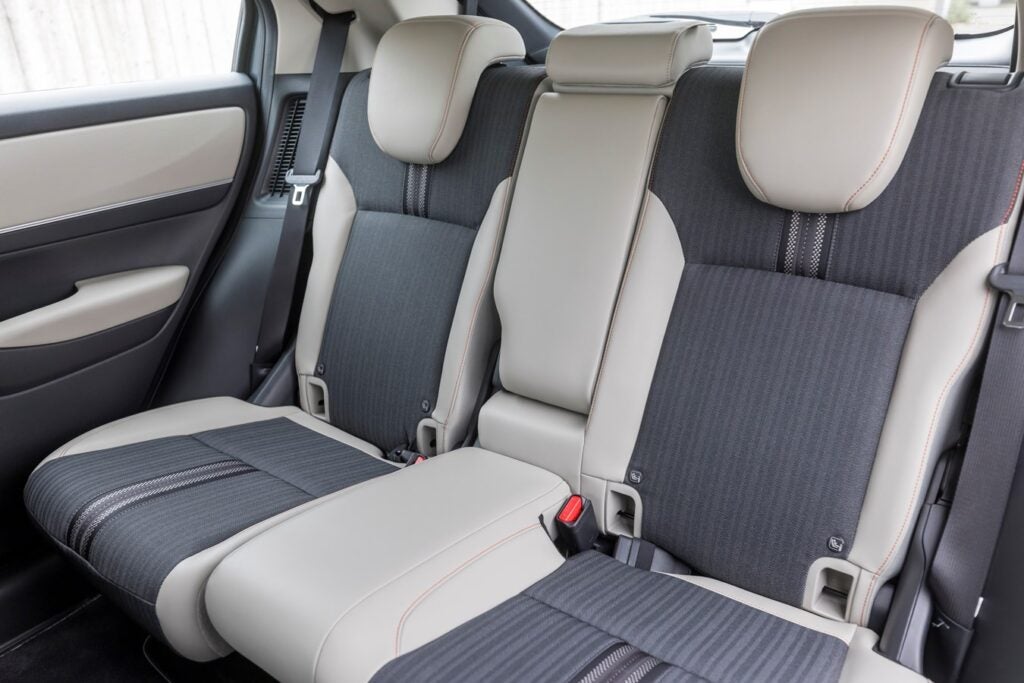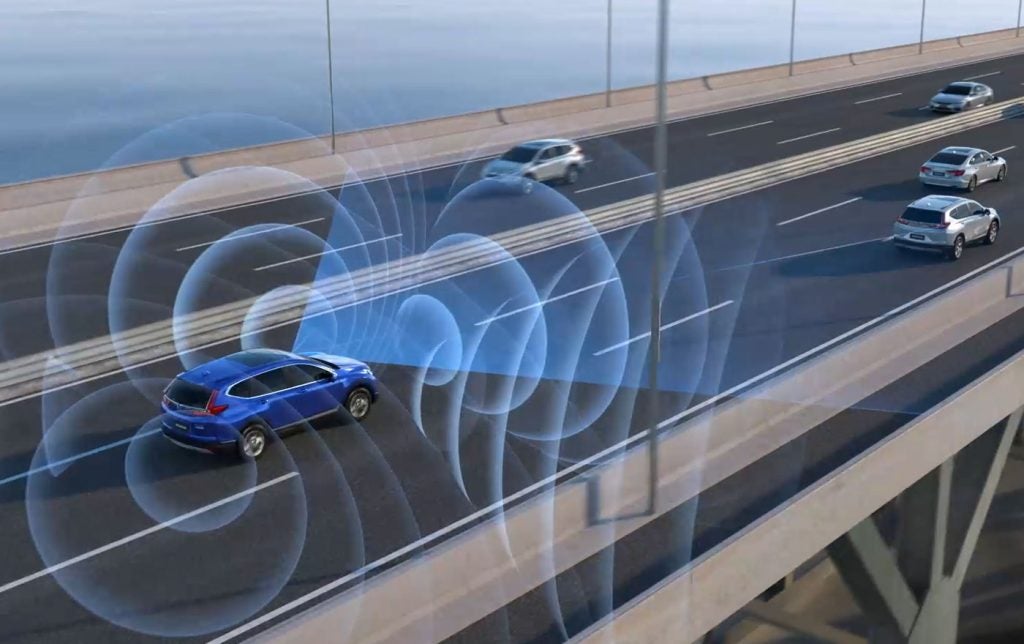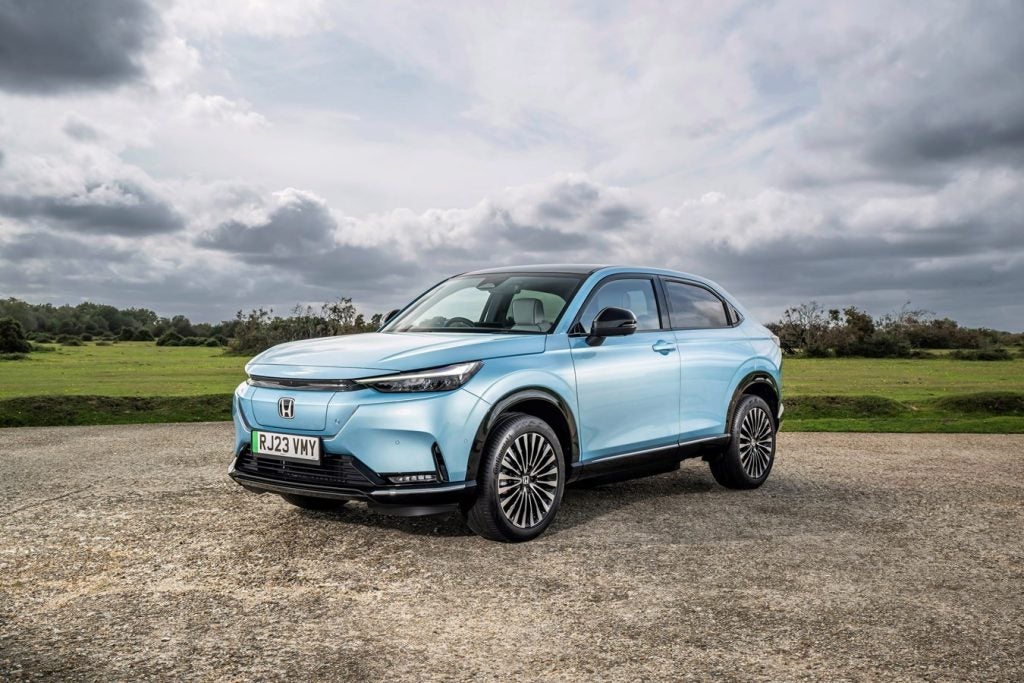
Inside story
Three trim levels are available on the latest incarnation HR-V, starting with the Elegance, rising to the Advance and Advance Style. The swish interior of the top-drawer press review incorporates a blend of materials. Touches of metallic trim give a contemporary finish to the air vent bezels, steering wheel trim, door handles and the climate control panel. Orange detailing and lighter upholstery on the Advance Style add to the overall cabin appeal. Upmarket textiles cover the door-card inserts, headliner, windscreen pillars and dashboard inlay. Most of the surfaces are soft to touch with all the usual scratchy plastics hidden at ankle level. Generous-sized armrests are fitted on either side of the heated front seats.
Instrumentation
The instrumentation cluster incorporates a TFT-LCD Driver Information Interface (DII) central display, flanked by battery charge status and fuel-level gauges.
The DII includes a digital speedo and linear power gauge with a charge status indicator. Integrated into the lower half of the DII is a ‘content zone’, which the driver can scroll through to choose from a variety of information, including navigation instructions, audio track information, smartphone contacts, and all-wheel-drive system status and smart vehicle maintenance information.
The DII also features a graphic of the current power flow, indicating the vehicle’s power source at any given moment, status updates on battery charging plus an ‘ECO Guide’ to suggest more efficient driving techniques. In addition, drivers can monitor their efficiency over time with a drive cycle score, earning points depicted by leaf icons on the display, increasing or decreasing as a different stage of fuel economy is achieved.
How well do you really know your competitors?
Access the most comprehensive Company Profiles on the market, powered by GlobalData. Save hours of research. Gain competitive edge.

Thank you!
Your download email will arrive shortly
Not ready to buy yet? Download a free sample
We are confident about the unique quality of our Company Profiles. However, we want you to make the most beneficial decision for your business, so we offer a free sample that you can download by submitting the below form
By GlobalData
Connectivity and infotainment
On the connectivity front, a nine-inch touchscreen allows you to pinch, swipe and tap through the Honda Connect in-car audio and information system. This includes DAB and internet radio (with a welcome dial to control the volume rather than a touch-slider), phone interface and Bluetooth connectivity, rearview parking camera with dynamic guidelines.
Although the touchscreen is easy to use, the screen size itself is on the small side compared to rival large SUVs. There are no fewer than four USB charging points dotted around the cabin to keep occupants content and connected.
Beneath the touchscreen is a no-nonsense cluster to operate the HVAC via three chunky dials with buttons set in between.

Cavernous cabin
To maintain the balance of SUV styling and cabin space, Honda engineers packaged all hybrid drivetrain components within the chassis and engine bay. Key developments include rerouting the air intake and incorporating components on top of the engine. This allows room for the electric motors, propulsion motor and generator to be accommodated within the engine compartment.
Honda also reduced the size of the power control unit (PCU) by 20% compared with the previous-generation component. This allows for the auxiliary 12v battery to fit into the engine compartment, freeing up space at the rear. This is made possible by using the semiconductors for the PCU.
Also key to maximising cabin room is the positioning of the fuel tank in the centre of the chassis beneath the front seats, which is unique in this class. In addition, the HVAC unit has been made more compact, allowing the interior to adopt a low, horizontally-oriented design for an increased forward view, and a greater sense of space.
Forward visibility is good, partly thanks to a new driving position, which is 10mm higher than in the previous model. In addition, the windows are shaped to admit as much light as possible. Sight lines are aided by the flat line of the bonnet and heated wing mirrors that are now located lower down on the door.
The front seats feature mat-structure support, replacing the previous spring set-up, which helps prevent fatigue on long journeys and increases comfort in everyday use. The uncluttered dashboard adds to the sense of spaciousness.

An Air Diffusion System introduces a new concept of air conditioning, with L-shaped vents positioned in the top corners of the dashboard that deliver the restorative effects of a natural breeze to all occupants. A tactile dial is used to switch between two modes: the normal outlet with forward-directed airflow and the Air Diffusion System which creates a new gentle flow of air.
Size-wise, although the overall vehicle dimensions are similar to those of the previous model, the latest model offers more leg and shoulder room. In addition to the 35mm increase in rear legroom, there is an additional two-degree recline compared to the previous generation HR-V, enabled by Honda’s centre tank layout and clever packaging of hybrid components. The platform configuration also allows Honda to retain the rear ‘Magic Seat’ set-up, which offers both fold-flat or flip-up seat flexibility, depending on the load space required. Further back, the smaller than expected boot space provides a capacity of 304 litres with the 60/40 back seats in the upright position. With the rear seats folded flat, the load increases to 1,274 litres.
Storage space and connectivity points around the cabin have also been improved over the previous model. A large centre cubby swallows items large and small. There are two USB charging sockets in the front and two in the back, in addition to a wireless charging pad located in the lower section of the centre console, enabling all occupants to charge devices at the same time. The 10-speaker premium audio system, external amplifier and touch-activated cabin lights further reinforce the premium interior feel and comfortable, relaxing ambience.

NVH improvements
The cabin feels relatively quiet and civilised due to several NVH management measures. For example, the thickness of the dash lower panel, which plays a key role in separating the engine and motor noise from the interior, has been increased from 0.8t to 1.4t, resulting in an improvement in both vibration and noise transmission. By using a single piece of plastic and an increased number of fixing points, vibration resistance is improved, while additional noise-insulating materials are optimally placed in key areas including the dashboard top, bonnet, door linings, console and inner fender.
Advanced driver assistance systems
The HR-V comes equipped with a suite of advanced driver assistance system (ADAS) technologies as part of its ‘Honda Sensing’ suite, including collision mitigation warning, lane departure warning, road departure mitigation, lane-keeping assistance, adaptive cruise control, traffic sign recognition, intelligent speed assistance, auto high-beam assist, blind spot information, cross-traffic monitor, hill descent control and a new wider angle high-definition camera. The latter replaces the multi-purpose camera and sensor set-up of the previous-generation HR-V.
On balance, the top-spec HR-V comes with a generous list of standard equipment, clever safety technology and an intuitive infotainment system. Its comfortable drive is partly thanks to NVH refinements, suspension set up and a cabin filled with dense, soft materials. Rival models include the Toyota C-HR, VW T-Roc and Ford Puma.






